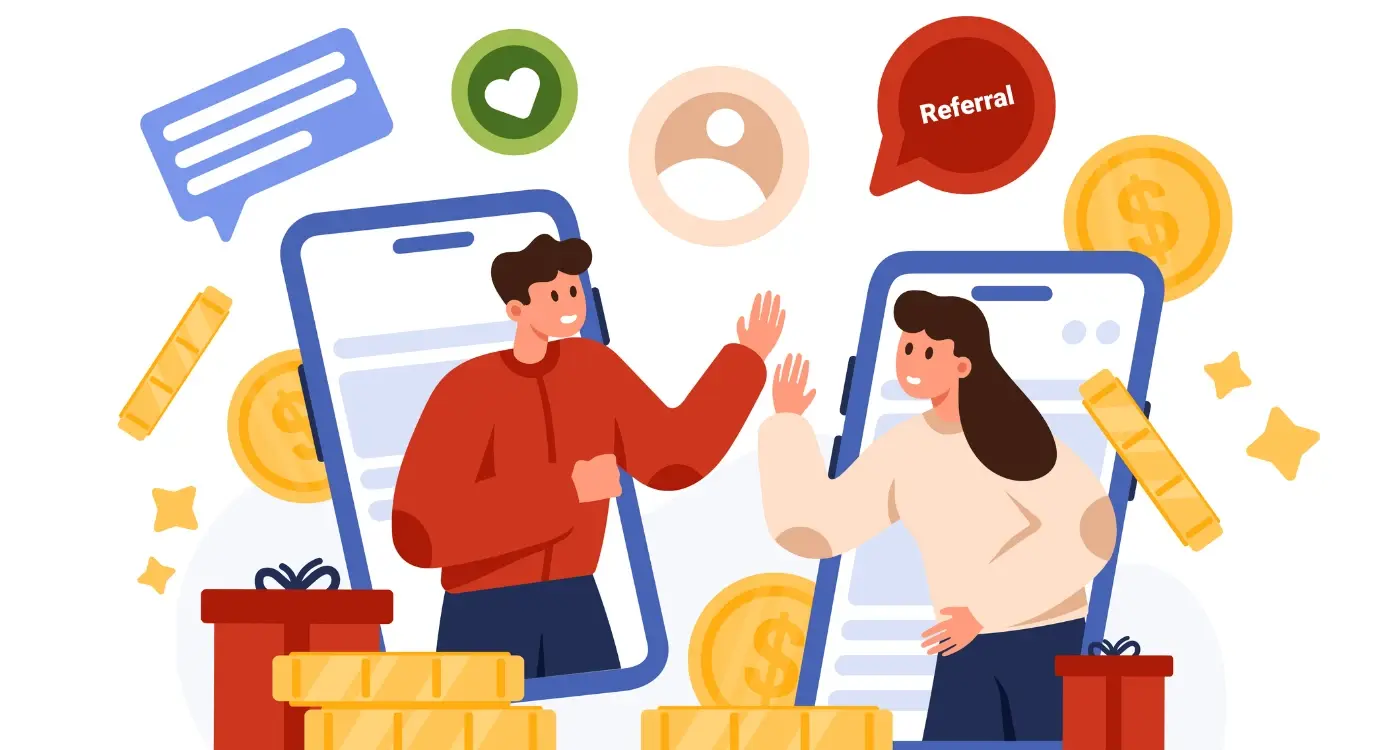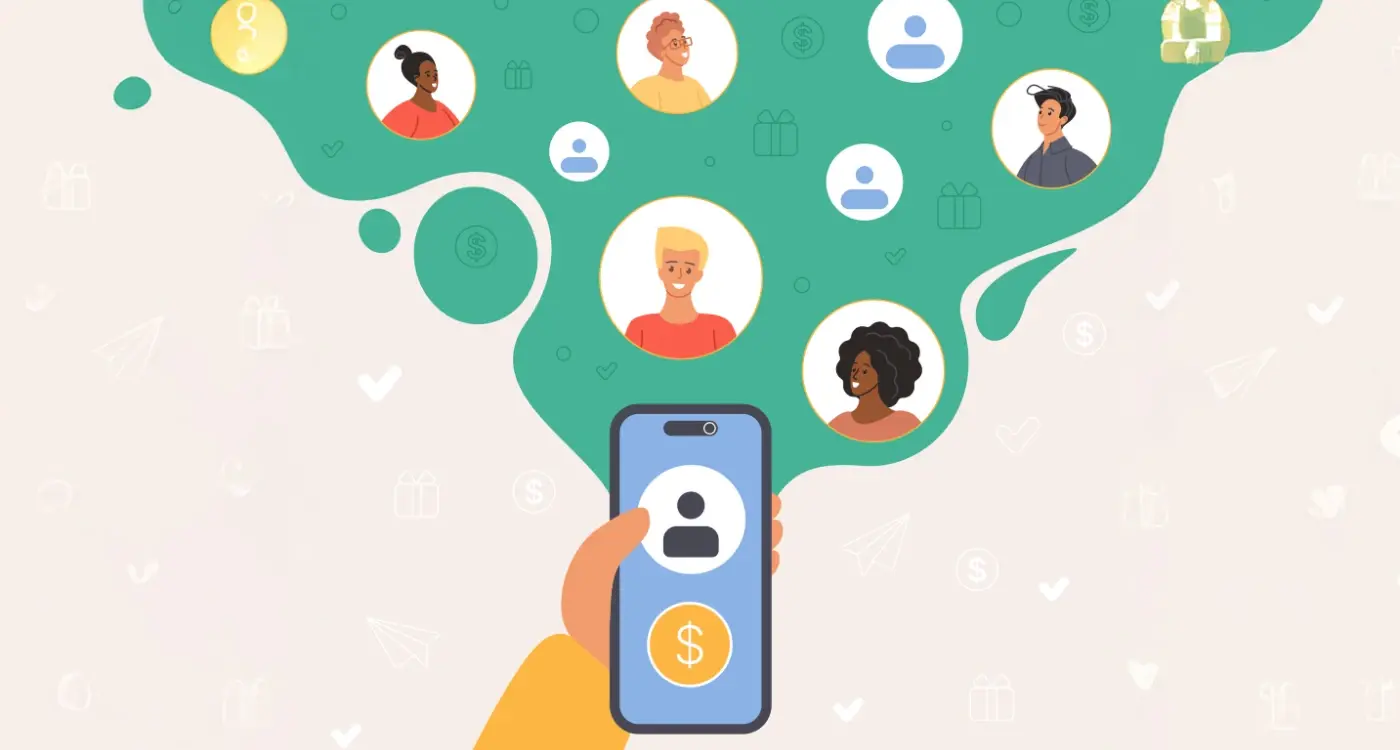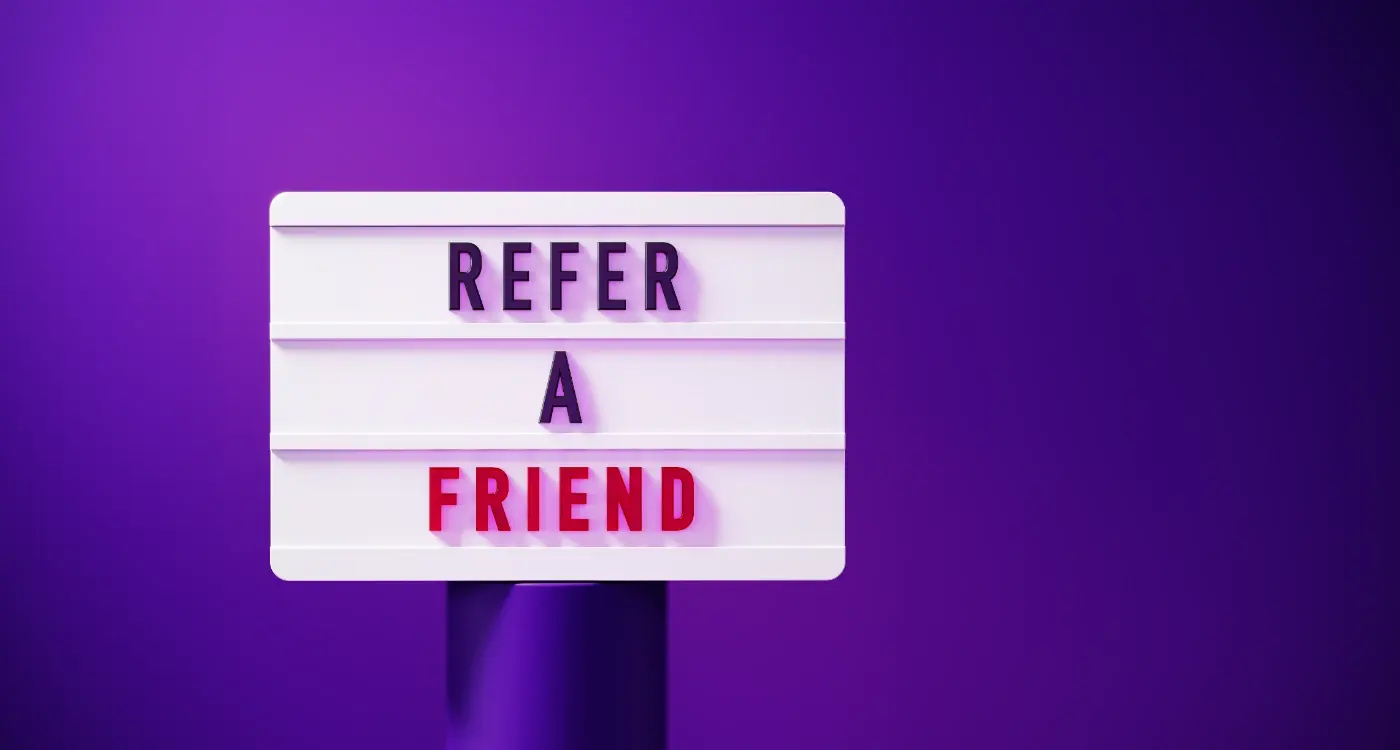How Do I Promote My App's Referral Program To Existing Users?
Most mobile app developers think their biggest challenge is getting new users to download their app. But here's what they don't realise—your existing users are actually your most powerful marketing tool. When you've got a referral program sitting in your app that nobody knows about, you're missing out on free, high-quality users who are more likely to stick around.
The problem is that building a brilliant referral program is only half the battle. You need to master user communication to make sure your existing users actually know it exists. Without proper program awareness, even the most generous referral rewards will sit unused, gathering digital dust.
A successful referral program isn't just about great rewards—it's about making sure your users know those rewards exist in the first place.
This guide will walk you through exactly how to promote your app's referral program to the users you already have. We'll cover everything from understanding your user base to creating clear visual materials, timing your announcements perfectly, and using every communication channel at your disposal. By the end, you'll have a complete roadmap for turning your existing users into your most effective marketing team.
Understanding Your Existing User Base
Before you start promoting your referral programme, you need to know who you're talking to. I've worked with clients who jumped straight into creating fancy referral campaigns without properly understanding their users—and it rarely ends well. Your existing users aren't just numbers in your analytics dashboard; they're real people with different motivations, habits, and reasons for using your app.
Who Are Your Most Active Users?
Start by looking at your user data to identify patterns. Which users open your app most frequently? Who makes purchases regularly? Who engages with your content? These are your power users, and they're often your best candidates for referrals because they already love what you've built. But don't ignore your occasional users either—sometimes they just need the right incentive to become more engaged.
What Motivates Different User Groups?
Not everyone responds to the same rewards. Some users might be motivated by discounts or free features, while others prefer exclusive access or social recognition. Young users might love sharing on social media, whilst older users might prefer email invitations. Understanding these preferences means you can tailor your referral programme messages to different segments of your user base, making them far more effective than a one-size-fits-all approach.
Creating Clear Visual Communication Materials
Right, let's talk about something that can make or break your referral program—the visuals. I've worked on countless mobile app projects where brilliant referral programs failed simply because users couldn't understand what they were looking at. Your visual communication materials need to do the heavy lifting when it comes to explaining your program quickly and clearly.
Start with your icons and buttons. They should be instantly recognisable and placed where users naturally look. A gift box icon or two people shaking hands works well for referral programs. Keep your colour scheme consistent with your app's existing design—don't suddenly introduce bright purple buttons if your app is all blues and whites.
Making Complex Information Simple
Your referral program might have multiple steps or reward tiers, but your visuals shouldn't look like a complicated flowchart. Break information into digestible chunks using clear typography and plenty of white space. Use progress bars to show users where they are in the referral process; people love seeing their progress.
Create a simple infographic showing exactly how your referral program works in three steps or fewer. Most users won't read lengthy explanations, but they'll glance at a well-designed visual guide.
Testing Your Visual Materials
Before rolling out your materials, test them with real users. What seems obvious to you might be confusing to someone else. I always recommend showing your visuals to people who haven't used your app before—they'll spot unclear elements immediately. Your program awareness depends on users understanding what they're looking at within seconds of seeing it.
Timing Your Referral Program Announcements
After working with countless apps over the years, I've learnt that timing can make or break your referral program launch. You might have the most brilliant rewards system in the world, but if you announce it at the wrong moment, you'll hear crickets instead of celebration.
The sweet spot for launching your referral program is when users have had enough time to genuinely love your app—but not so long that they've forgotten why they downloaded it in the first place. Most successful launches happen between days 7-14 after a user first opens your app. This gives them time to explore your features and understand the value you're providing.
Best Times to Announce Your Program
- Right after users complete their first successful action (like making a purchase or finishing a level)
- When they've been active for at least a week consistently
- After they've given your app a positive rating
- During natural celebration moments within your app
- When they're browsing rewards or account sections
Avoid These Timing Mistakes
Don't bombard new users with referral requests before they understand your app's value. Similarly, avoid announcing during stressful moments—like when someone's trying to complete a purchase or solve a problem. The goal is to catch users when they're feeling positive about their experience with your app.
Using In-App Messages and Push Notifications Effectively
When it comes to mobile app user communication, in-app messages and push notifications are your best friends—but only if you use them properly. I've seen too many apps bombard users with generic messages that end up being deleted or ignored completely. The key is being smart about timing and making your messages feel personal rather than automated.
In-app messages work brilliantly for referral program awareness because they catch users when they're already engaged with your app. Pop up a message right after someone completes a purchase or finishes using a key feature; they're in a positive mood and more likely to share with friends. Keep the message short and clear—tell them exactly what they get for referring someone and what their friend gets too.
Getting Push Notifications Right
Push notifications are trickier because they can feel intrusive. Send them at the wrong time and users will turn off notifications completely. Test different days and times to see when your users are most responsive. Personalise the message with their name and maybe reference how long they've been using your app.
The best referral notifications feel like a friend telling you about something good, not a company trying to sell you something
Remember that both message types should feel like a natural extension of your app experience, not an interruption. Users can tell when you're being genuine versus when you're just trying to boost your numbers.
Leveraging Email and Social Media Channels
Email remains one of the most effective ways to reach your existing users about your referral programme—and I say that knowing how cluttered most people's inboxes are these days! The key is making your referral email feel personal and valuable, not like another marketing message they'll delete without reading. Start with a clear subject line that mentions rewards or benefits rather than just "referral programme." Something like "Earn £10 for every friend you invite" works much better than "Check out our new referral system."
Your email content should be short and sweet. Explain what users get, what their friends get, and how the whole thing works in three simple steps maximum. Include a big, obvious button that takes them straight to their personal referral code or sharing link—don't make them hunt for it.
Social Media Strategy
Social media channels work differently because they're public spaces where your users are already sharing content. Create posts that your users would actually want to share on their own profiles. This might be a graphic showing the rewards available or a fun video explaining how the referral programme works. The trick is making content that doesn't feel like advertising—your users should feel proud to share it with their networks.
Measuring Success and Adjusting Your Approach
Right, so you've launched your referral program and sent out all those carefully crafted messages to your existing users. Job done? Not quite! The real work starts now—tracking how well your mobile app referral program is actually performing and making changes based on what the data tells you.
I can't stress enough how many app developers skip this bit. They launch their program, sit back, and wonder why it's not working. You need to be watching your numbers like a hawk, especially in those first few weeks when user communication is at its peak.
Key Metrics to Track
- Click-through rates on your in-app messages and push notifications
- Number of referral links shared by existing users
- Conversion rates from referral links to actual downloads
- User engagement with program awareness materials
- Cost per acquisition through referrals versus other channels
Set up weekly review sessions for the first month, then monthly afterwards. Your referral program needs constant attention—not just a quick glance every few months.
Making Data-Driven Adjustments
If your click-through rates are low, test different messaging styles or timing. Poor conversion rates might mean your incentives aren't attractive enough. The beauty of digital marketing is that you can tweak things quickly—use that to your advantage and keep refining your approach until you find what works.
Building Long-Term User Engagement
Getting users to share your app once is brilliant—but keeping them engaged enough to become regular advocates? That's where the real magic happens. I've worked with apps that had fantastic referral programs but completely ignored what happened after that initial burst of sharing; the results were disappointing to say the least.
Making Referrals Part of Your App Experience
Your referral program shouldn't feel like a separate feature bolted onto your app. The best programs I've seen integrate sharing opportunities naturally into the user journey. When someone completes a level, finishes a workout, or saves money using your app—that's when they're most likely to want to tell their friends about it.
Think about adding gentle reminders at these peak moments rather than constantly badgering users with referral prompts. Nobody likes being pestered, and you'll quickly find people turning off notifications or worse, deleting your app altogether.
Keeping the Momentum Going
Regular users need reasons to keep sharing beyond just the initial reward. Consider running seasonal campaigns, offering bonus rewards for multiple referrals, or creating leaderboards for your most active advocates. The key is variety—mixing up your approach keeps things fresh and gives people new reasons to engage with your referral program month after month.
Conclusion
After working with countless mobile app teams over the years, I've seen what separates successful referral programs from the ones that quietly fade away—and it all comes down to how well you communicate with your existing users. You can't just build a brilliant referral feature and expect people to magically discover it; you need to actively tell them about it through the right channels at the right time.
The strategies we've covered aren't just theoretical concepts—they're practical approaches that work when you apply them consistently. Whether you're using in-app messages, push notifications, or email campaigns, the key is making your program awareness feel natural rather than pushy. Your users already trust your mobile app enough to keep using it, so they're more likely to share it with friends when you make the process clear and rewarding.
Remember that user communication isn't a one-time event; it's an ongoing conversation that needs to evolve based on what your data tells you. Start with one or two communication channels, measure what works, then gradually expand your approach. The most successful referral programs are the ones that feel like a natural extension of the user experience rather than an interruption to it.
Share this
Subscribe To Our Learning Centre
You May Also Like
These Related Guides

What's the Difference Between Referral Programs and Affiliate Marketing for Apps?

Which Apps Have the Most Successful Referral Programs?



